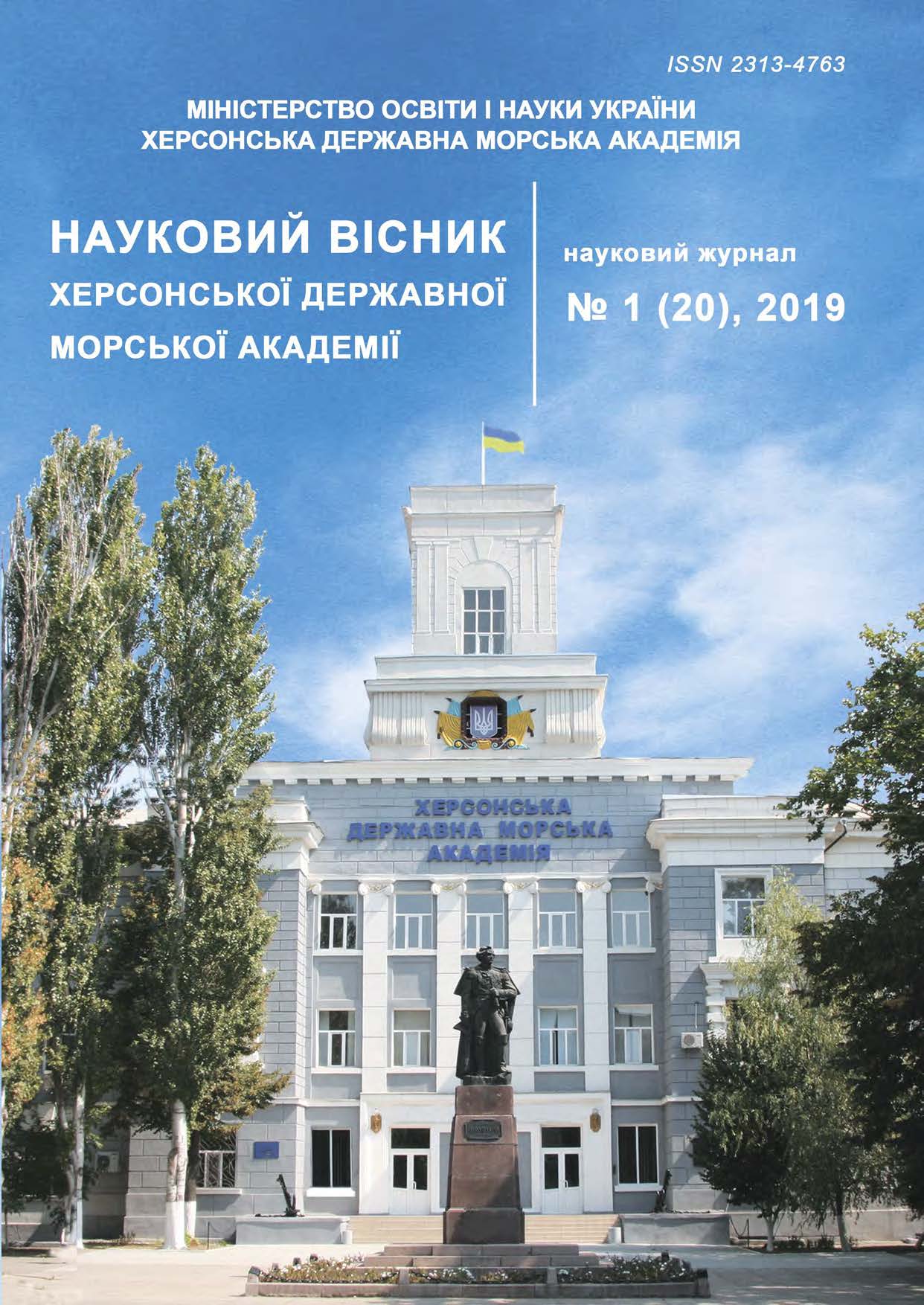CHANGE OF OPERATING CHARACTERISTICS OF TANKER INERTIZATION SYSTEM BY USE OF FORCED GAS SUPPLY
https://doi.org/10.33815/2313-4763.2019.1.20.004-011
Abstract
The aim of the research is to improve the quality of the inert gas system on tankers through the use of new technology for the forced inert gas supply to the cargo hold space.
The article deals with the problem of increasing the quality of the process of filling the cargo spaces of tankers with inert gases when changing the cargo type. Based on the analysis of the shortcomings of the operation of modern technological schemes, it has been stated that the working process cannot guarantee the high quality of ventilation process of the cargo spaces of the tanker. The simulation results have shown that the greatest reduction of the process time can be obtained due to the forced supply of inert gases. An analysis on checking the influence of the working jets on the characteristics of such a process has been done and an investigation of the operation of three technological schemes for the location of cone nozzles on the surface of the cargo space has been provided. The currently used technology for displacing air from inert gases from cargo holds on tankers is characterized by a long process time. To solve this problem, it was proposed to improve the quality of the inert gas system on tankers through the use of new technology for the forced inert gas supply to the cargo hold space. During the ventilation of the hold, the forced supply of inert gases must be consistent with the structure of the air stream moving at low speeds inside the rigid walls of the cargo hold bounding it. For this, a combined scheme for supplying inert gases to the hold of the vessel was developed. Due to the implementation on the tanker of the developed technology for the forced supply of inert gases to the cargo hold as a percentage, the process improvement in the transition from natural to forced hold ventilation was 13.5%. Reducing the time spent, ceteris paribus, amounted to 56.47%. Further research should be aimed at developing methods for the technical implementation of the developed technology, depending on the design of the tanker and the technical characteristics of the ship's inert gas system.
References
International Convention for the Prevention of Pollution from Ships, MARPOL 73/78.
Dzhaluriya, J. (1983). Estestvennaya konvekciya. Teplo– i massoobmen. Moskva : Mir.
Zubarev, V. N., Kozlov, A. D. & Kuznecov, V.M. et al. (1989). Teplofizicheskie svojstva texnicheski vazhnyx gazov pri vysokix temperaturax i davleniyax : spravochnik. Moskva : Energoatomizdat.
Uong, X. (1979). Osnovnye formuly po teploobmenu dlya inzhenerov. Moskva : Atomizdat.
Gusejnov, D. A., Spektor, S. S. & Vajner, L. Z. (1964). Texnologicheskie raschety processov pererabotki nefti. Moskva : Ximiya.
Elder J. W. (2006). Turbulent free convection in a vertical slot. Journal of fluid mechanics. 23 (1), 99–111.
Eckert E. R. G. & Carlson W. O. (1961). Natural convection in an air enclosed between two vertical plates with different temperatures. International Journal of Heat and Mass Transfer.
2 (2), 106–120.
Abramovich, G. N., Krashennikov, S. Y., Sekundov, A. N. & Smirnova, I. P. (1974). Turbulentnoe smeshenie gazovyx struj. Moskva : Nauka.
Abramovich G.N. (1960). Teoriya turbulentnyx struj. Moskva : Nauka.






